Detergent build-up on cloth diapers is a huge pain! It is more common with people who have soft water. For the record, I have a whole home water softener in my current house, and my hardness is 0ppm, so I definitely have experience in this area! In my own experience, washing in hard water is easier than 0 ppm. But it is not impossible, and with a few easy tweaks, you will find something that works for you.
Detergent build-up can cause the following problems:
- Your diapers may not smell very clean. I know this doesn’t make sense on the surface (you would think they’d smell like detergent!), but detergent is designed to bind to dirt and grime and wash away. If the detergent isn’t getting rinsed away completely, then there is still dirt and grime bound to it as it rests in your diapers.
- It can cause a rash on the baby’s skin. Your baby may have a reaction to the detergent itself, but it can also be the fact that detergent is high pH that doesn’t match the pH of our skin.
- Your diapers may feel stiff or greasy.
How Bad is Build Up?
Before I get into how to get rid of detergent build-up, I do want to say don’t go looking for problems where there may be none. This is one thing that bothers me with the advice given out as gospel in cloth diaper wash groups.
Don’t fix what ain’t broke! If you’re not having issues, testing for detergent build-up and trying to remedy it because someone online said you have to will drive you crazy for no reason. Small amounts of residual detergent may be normal despite what some people will say.
They may also be random (maybe you had a little more detergent than usual in your last load) and not a constant problem, but now after one detergent-heavy wash, you’re wasting hours trying to “strip” your diapers when they would have likely evened out over the next couple washes of your normal routine.
I really only recommend trying to diagnose and deal with detergent build up if you’re actually having issues from it.
1. Test & Reset
If you are having issues, you can test for detergent build-up by filling a clear bowl with warm water and taking a clean diaper (the absorbent parts–not a cover) and swishing it around in the bowl & squeezing it out.
Give the water a moment to stop moving and take a look. Do you have detergent forming a layer of foamy film on top of the water? Then you have definite detergent build-up. If there is no film but the water is cloudy, you may also have some build-up issues–I say “may” because cloudiness could be other things, too.
But don’t go over scrutinizing it. Like I said earlier, a small amount of residue could be normal or a fluke. If you have only a small amount, you likely don’t have a huge build-up issue (small amounts that never get washed out over time could lead to a bigger problem, but if it has been long enough where you are seeing issues, you are going to have more detergent than a few bubbles here and there if it’s build-up that is actually the problem).
If you determined there is an issue, you need to reset your diapers. The fastest way to do that is by rinsing them under the bathtub faucet. It’s probably the faucet in your home with the most pressure and the greatest amount of water coming out at once, but your utility sink might have a powerful flow, too.
Alternatively, you can do water-only washes in your washing machine, but it will take longer that way. If you’re able, try allowing the diapers to soak for a half-hour or so to loosen up the fibers, then continue with your washes.
2. Ditch The Water Softener Additives
If you are treating your hard water with Calgon or Borax, it might be time to either greatly reduce how much you use, or ditch them all together. It is so easy to over-soften your water, and extremely soft water leads to detergent build-up. Also, Borax is known to be a skin irritant, so if your wash issues are rash related, I wouldn’t want to keep using it.
I know some people are worried about mineral build-up, but I believe that mineral build-up to a degree that leads to big issues is less common than some people think.
If your diapers start to get a little stiff and dingy from hard water, stripping the minerals is actually not a super hard process and is faster and less hassle than constantly blasting your diapers to get all the detergent build up out.
But if you have only moderately hard water, I doubt you’re going to feel the need to strip the minerals all that often (or ever!)
3. Clean Your Washing Machine
Your washing machine may have detergent residue that is contributing to the problem with your diapers. Clean your machine following the instructions in your user manual.
If you have never cleaned your washing machine before, you may need to clean it a couple of times to get it reset. The “perfect student” cloth diapering people clean their machine once a month. I do it much less than that…
4. Reduce Your Detergent Amount
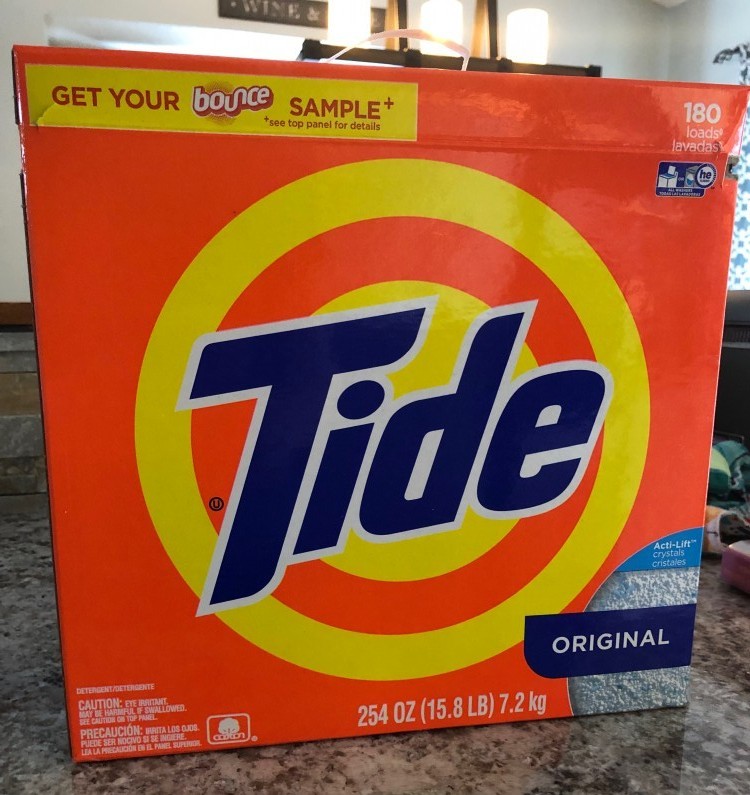 Reduce your detergent amount within reason. I have literally seen online people use ONE HALF OF A TEASPOON for a full load of soiled diaper laundry.
Reduce your detergent amount within reason. I have literally seen online people use ONE HALF OF A TEASPOON for a full load of soiled diaper laundry.
Detergent isn’t the devil, and neither is extra rinses. You need a proper amount–less if your water is very soft–but you still need enough. I would rather use an appropriate amount of detergent with an extra rinse or two than use half a teaspoon on a heavily soiled load of laundry.
I could see you getting by with very small amounts if your baby is EBF and not yet on solid food. EBF poop is water-soluble, and EBF pee is less potent. But if you use any formula or your baby is eating solids, even if you spray your diapers well or use disposable liners on your diapers, it’s important you wash your diapers with enough detergent to get the job done.
But again…don’t fix what ain’t broke. If you have been using a very small amount of detergent and you feel like your diapers are getting clean, I’m not about to tell you to do anything different. But if you’re dealing with issues, it may not all be detergent build up…it may be not enough detergent combined with not enough rinses. (See step 6 for more info on this)
I myself use line 1 of my chosen detergent (Tide original powder at the moment, but I rotate different detergents on occasion) for my first wash and only half of line 1 for my second wash. I’ll explain this more in step 5.
5. Flip Some Steps Around In Your Routine
Conventional wisdom for diaper laundry goes like this: do two washes–first wash with a small amount of detergent, second wash with more detergent.
The thought behind it is that you use a smaller amount in the first wash when you are just trying to loosen the fibers and get rid of the worst of the soil, then you use the greater amount when you’re actually trying to get them clean in the second wash.
If you are struggling with detergent build-up that you can’t seem to fix, I recommend flipping the detergent amounts on the first and second washes–use the higher amount in the first wash, the lower amount in the second wash. This gives the higher amount of detergent more opportunity to rinse out fully by the end of your wash routine. Yes, your diapers will get clean just the same.
You can also try different cycles on your washer to see if some of them use more water while still agitating appropriately. More water will help a detergent build-up issue.
6. Extra Rinses
Despite what the internet wash groups may say, extra rinses are not the devil. Seriously…unless you have an extreme water situation, the idea that plain water is going to hurt your diapers is over-generalized fear-mongering. There are instances where your water may be the issue, maybe if you have well water with a high pH or high iron content, but the average person doesn’t need to be scared of plain water touching their diapers.
Only you can figure out how many rinses you need–not anyone on the internet. If you are having trouble getting all of your detergent out, you might need more rinses, or even another plain water wash cycle.
I have started doing a plain water wash cycle–just the shortest one my washing machine offers–after my two washes with detergents. I found it more effective than a simple extra rinse and it has fixed my detergent build-up issue.
Note: If you are like me, you want to try and be conscious of your water usage. You might be wondering if cloth diapers are even worth it if you have to use so much water to clean them. I wrote a post on this I recommend you check out: Disposable Diapers vs Cloth Diapers – Which Is Actually Greener? Disposable diaper manufacturing is not without significant water usage, either.
However, here is how I personally offset this. I do diaper laundry twice a week instead of every other day. This ensures that my loads are full and worth doing instead of more frequent loads. As my baby gets a little bigger, she will use even fewer diapers in a day, and I will be able to stretch my diaper laundry out to once a week.
7. Try Different Diapers
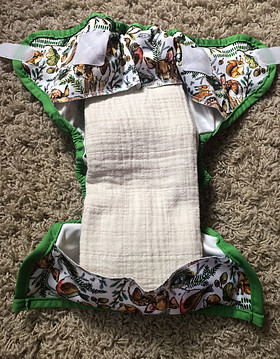 This is my last suggestion because I look at it as a last resort, but certain styles of diapers are more prone to detergent build-up than other styles. Multi-layered diapers like some inserts, fitteds, all-in-ones, and even prefolds can hang onto detergent more stubbornly than flats or some pocket inserts.
This is my last suggestion because I look at it as a last resort, but certain styles of diapers are more prone to detergent build-up than other styles. Multi-layered diapers like some inserts, fitteds, all-in-ones, and even prefolds can hang onto detergent more stubbornly than flats or some pocket inserts.
Using flats or cloths like flour sack towels can make clearing residual detergent much easier. With fewer layers piled on top of each other, there are fewer places for the detergent to get stuck and they rinse clean much easier.
If you’re using pocket-style diapers, you can simply fold flats or flour sack towels into a rectangular pad to stuff as an insert. You can also just set the folded flat right inside a cover. You don’t need to convert to origami folds or anything of the sort if you don’t want to.
One thing I will add here is to consider washing your PUL items separately (assuming the PUL is separate, like a cover or a pail liner/wet bag). I personally have not done this, and I’ll be honest that I don’t totally understand how this could work, but anecdotally, people have reported that they have less build-up when they wash their diaper inserts separately from the PUL. It’s at least worth a try if you are struggling!
Don’t Give Up!
You can get this figured out! Make sure you take notes of what works and what doesn’t as you go along, and you may need to do more than one thing to fix the issue.
How did you fix your detergent build-up issue? Let me know in the comments!
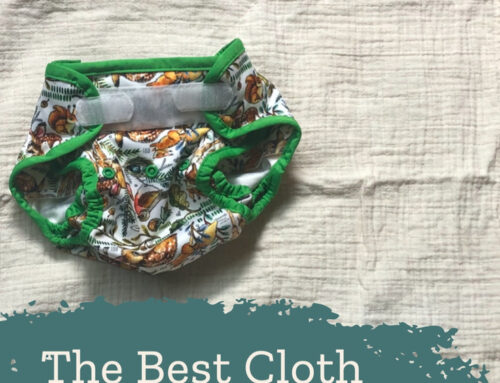
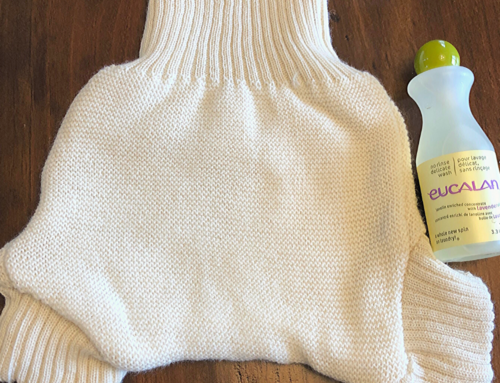
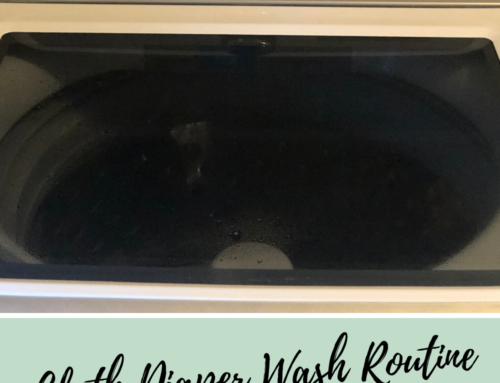
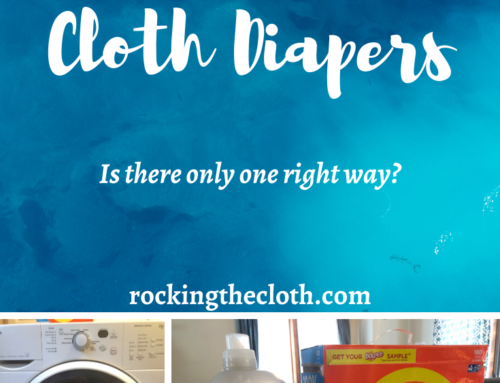
Leave A Comment